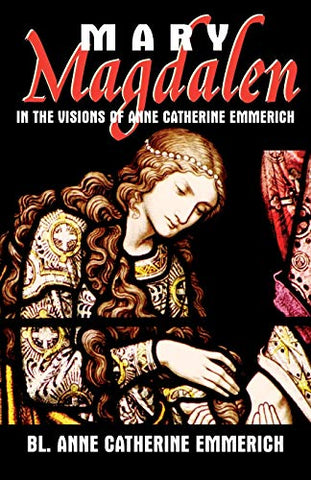THE malicious enemies of our Savior led Him through the most public part of the town to take Him before Pilate. The procession wended its way slowly down the north side of the mountain of Sion, then passed through that section on the eastern side of the Temple, called Acre, towards the palace and tribunal of Pilate, which were seated on the northwest side of the Temple, facing a large square.
Caiphas, Annas, and many others of the Chief Council, walked first in festival attire; they were followed by a multitude of scribes and many other Jews, among whom were the false witnesses, and the wicked Pharisees who had taken the most prominent part in accusing Jesus.
Our Lord followed at a short distance; He was surrounded by a band of soldiers and led by the archers. The multitude thronged on all sides and followed the procession, thundering forth the most fearful oaths and imprecations, while groups of persons were hurrying to and fro, pushing and jostling one another. Jesus was stripped of all save His undergarment, which was stained and soiled by the filth which had been flung upon it; a long chain was hanging round his neck, which struck His knees as He walked; His Hands were pinioned as on the previous day, and the archers dragged Him by the ropes which were fastened round His waist.
He tottered rather than walked, and was almost unrecognizable from the effects of His sufferings during the night–He was colorless and haggard, His Face swollen and even bleeding, and His merciless persecutors continued to torment Him each moment more and more. They had gathered together a large body of the dregs of the people, in order to make His present disgraceful entrance into the city a parody on his triumphal entrance on Palm Sunday. They mocked, and with derisive gestures called Him king, and tossed in His path stones, bits of wood, and filthy rags; they made game of and, by a thousand taunting speeches mocked him, during this pretended triumphal entry.
In the corner of a building, not far from the house of Caiphas, the afflicted Mother of Jesus, with John and Magdalen, stood watching for him. Her soul was ever united to His; but propelled by her love, she left no means untried which could enable her really to approach Him. She remained at the Cenacle for some time after her midnight visit to the tribunal of Caiphas, powerless and speechless from grief; but when Jesus was dragged forth from his prison, to be again brought before his judges, she arose, cast her veil and cloak about her, and said to Magdalen and John: ‘Let us follow my Son to Pilate’s court; I must again look upon Him.’
They went to a place through which the procession must pass, and waited for it. The Mother of Jesus knew that her Son was suffering dreadfully, but never could she have conceived the deplorable, the heartrending condition to which he was reduced by the brutality of his enemies. Her imagination had depicted Him to her as suffering fearfully, but yet supported and illuminated by sanctity, love, and patience. Now, however, the sad reality burst upon her. First in the procession appeared the priests, those most bitter enemies of her Divine Son.
They were decked in flowing robes; but ah, terrible to say, instead of appearing resplendent in their character of priests of the Most High, they were transformed into priests of Satan, for no one could look upon their wicked countenances without beholding there, portrayed in vivid colors, the evil passions with which their souls were filled–deceit, infernal cunning, and a raging anxiety to carry out that most tremendous of crimes, the death of their Lord and Savior, the only Son of God.
Next followed the false witnesses, His perfidious accusers, surrounded by the vociferating populace; and last of all–Himself–her Son–Jesus, the Son of God, the Son of Man, loaded with chains, scarcely able to support himself, but pitilessly dragged on by his infernal enemies, receiving blows from some, buffets from others, and from the whole assembled rabble curses, abuse, and the most scurrilous language.
He would have been perfectly unrecognizable even to her maternal eyes, stripped as he was of all save a torn remnant of his garment, had she not instantly marked the contrast between his behavior and that of his vile tormentors. He alone, in the midst of persecution and suffering, looked calm and resigned, and far from returning blow for blow, never raised His hands but in acts of supplication to his Eternal Father for the pardon of his enemies.
As He approached, she was unable to restrain herself any longer, but exclaimed in thrilling accents: ‘Alas! is that my Son? Ah, yes! I see that it is my beloved Son. O, Jesus, my Jesus!’ When the procession was almost opposite, Jesus looked upon her with an expression of the greatest love and compassion; this look was too much for the heartbroken mother: she became for the moment totally unconscious, and John and Magdalen endeavored to carry her home, but she quickly roused herself, and accompanied the beloved disciple to Pilate’s palace.
[resource: The Dolorous Passion of Our Lord Jesus Christ Mary of Magdalen, and The Shroud of Turin]


